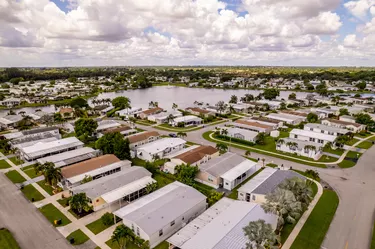
To regulate access, a wide range of assistance programs, ranging from housing initiatives to jobs and health care programs, rely on methods that determine a person or family's income status. While most agencies rely on the federal poverty line, it is not as precise as income limits published by the Department of Housing and Urban Development (HUD). Florida, like most of the nation, relies on the same programs for the federal, state and local programs it administers.
Determining Income Statistics
Video of the Day
Demand for low income benefits in Florida is high. To ensure that benefits are distributed to those experiencing the greatest need, government agencies and other entities rely largely on income when allocating assistance.
Video of the Day
Most housing assistance programs in Florida, such as HUD's public housing or Section 8 programs and other affordable projects provided by state and local government and nonprofits, use HUD's annual income limits. Many other assistance programs, particularly those funded by the federal government, rely on federal poverty line statistics, published by the U.S. Department of Health and Human Services (HHS).
HHS and Census Bureau
Even though most assistance programs rely on the HHS poverty line numbers and, to a lesser extent, similar numbers released by the U.S. Census Bureau, they are not necessarily the most precise. Each year, HHS and the Census Bureau announce a federal poverty line. In the case of HHS's numbers, the statistic does not vary by location.
The Census Bureau announces three different numbers – one for Alaska, one for Hawaii and one for the remaining 48 states and the District of Columbia. As the HHS website illustrates, each poverty-line figure increases as family size increases. HUD derives its income limits from American Community Survey data. HUD's limits change not only with household size but also by location.
Eligibility for Assistance
Some programs determine program eligibility on the basis of whether a family falls over or under the federal poverty line. Others accept applications from households whose earnings come in at a certain percentage of the poverty line, such as 125 or 150 percent, according to the HHS website. The HHS federal poverty line restricts access to many programs, including Head Start and the National School Lunch program, both of which are offered in Florida.
If a Florida family is seeking housing assistance, it generally needs to earn less than the median income of the area it would like to live in. For example, HUD's Section 8 Housing Choice Voucher program accepts applications only from families with incomes at or below 50 percent of their area's median income. Florida agencies that operate programs outside of HUD's purview usually defer to its statistics, but may set different percentage thresholds to evaluate eligibility.
Healthy Kids Program
One example of the many Florida programs that rely on the federal poverty line to qualify applicants is the Florida Healthy Kids program. Administered by the Florida Department of Children and Families, the program serves kids who come from families with incomes at or below 200 percent of the federal poverty line. This relatively high percentage helps close the gap that often exists between the federal poverty line and HUD's more flexible and location-sensitive income limits.
Eligibility by Area of Residence
As of 2022, the federal poverty line, which applies to Florida, is $13,590 for one person. That number increases by $4,720 for each additional family member, making $27,750 the 2022 federal poverty line for a family of four, according to HealthCare.gov.
HUD considers a four-person family living in the Fort Lauderdale metropolitan area with an income of $70,400 a year – 80 percent of the area's median income – "low income." At $44,000 – 50 percent of Fort Lauderdale's median income – HUD calls the same family "very low income." At $26,400, HUD places the same family in its "extremely low-income" group, which is at or below 30 percent of an area's median income. In the Gainesville metro, those numbers drop to $58,550, $36,600 and $21,950, respectively, for a family of four, according to HUDUser.gov.